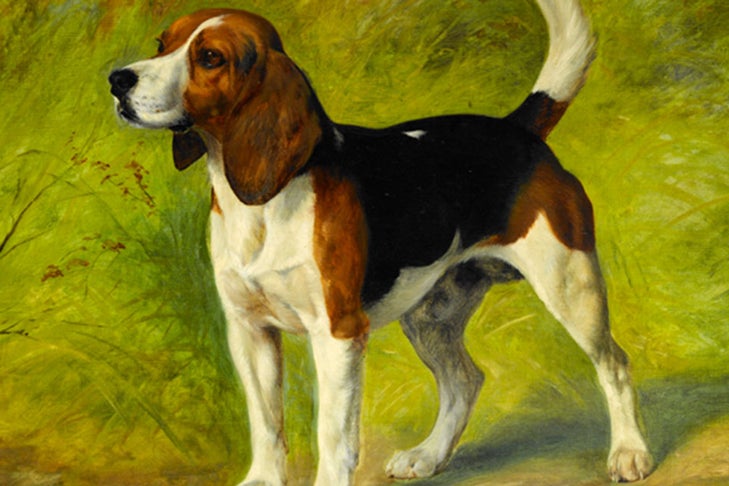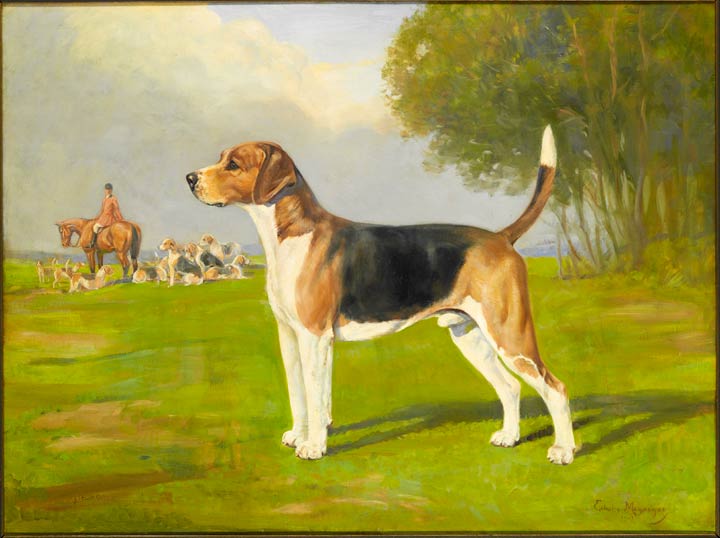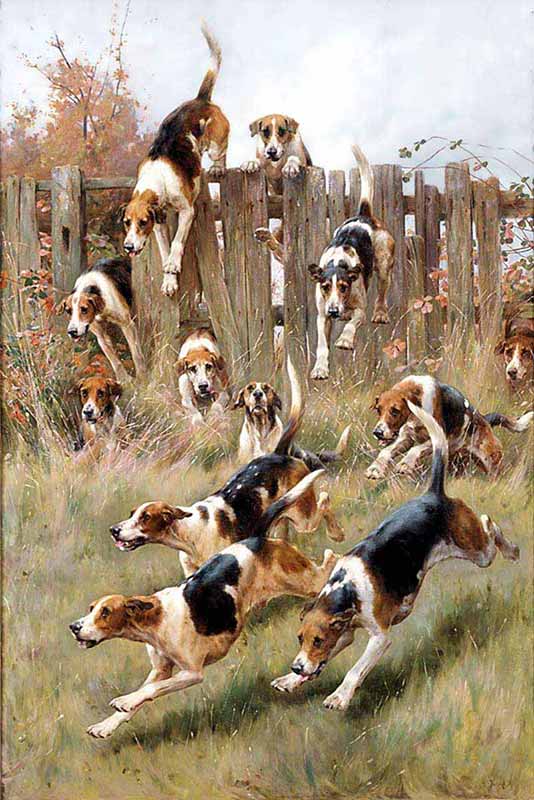
Originally published in the AKC Gazette:
The Harrier, Beagle, and English Foxhound are all the same ancestrally, but were developed for different game. This resulted with the slower-moving, superbly nosed Beagle at one extreme and the hard-running English Foxhound, who often overran its nose, at the other.
The Harrier, as in most things, was right in the middle. The Harrier is the oldest of the three, since, even if one discounts its Greek origins, the Penistone Pack was formed in 1260 in England and lasted for more than five centuries.

Still, the Beagle became the most popular small hound in England during the Middle Ages. A small dog used to hunt hare and rabbit, the Beagle was well-known during the reign of Edward III in the 14th century, but the name came into use in the 15th century from the Old English word “begle,” meaning small. And small they were: In fact, Queen Elizabeth I had a pack of six-inch Beagles. The criterion was set, and a pack was required to be well-matched and as small as possible, with voices that resulted in what has been described as “the exhilarating cry of the jovial pack.”
Throughout the centuries, all three breeds have been selectively interbred. William Somerville (1675–1742) got some of his best Harriers by crossing Cotswold Beagles with Southern Hounds. As late as 1780, a dog named Trojan became one of the top foxhound studs; interestingly, he was a reject from a Harrier pack. Greyhound blood was also introduced to the English Foxhound gene pool to increase speed. Later, there was also interbreeding between the English Foxhound and the old Spanish Pointer to improve both breeds. The Spanish Pointer was heavy and cumbersome, but possessed a great nose. The English Foxhound gave the Spanish Pointer more mobility, and the English Foxhound gained scenting ability.

With the Beagle for small, foot-handled game and the English Foxhound for large game handled on horseback, the Harrier became somewhat out of fashion. The Quarme Pack was perhaps the last of the typical and pure West County Harrier packs, as many packs had become a combination of Harriers and small English Foxhounds.
The Beagle was first recorded in America in 1642, and the first pack of English Foxhounds was a black and tan pack owned by Robert Brooke in 1650. Brooke was the first master of foxhounds in America. His pack was used in the development of today’s Black and Tan Coonhound.
An ardent admirer of foxhunting, George Washington, along with several other Virginia gentlemen, imported English packs in the 1770s. In 1785, Washington received some French staghounds from Lafayette, to which he added some hounds brought over from Ireland. The resulting Virginia hounds became the ancestors of today’s American Foxhound, a breed specifically developed for the different terrain and hunting conditions of the New World. —D.M.
ART: “Ch. Windholme’s Robino III,” a Beagle painted by Gustav Muss-Arnolt, 1905 (AKC collection); “Reynal’s Monarch,” a Harrier painted by Edwin Megargee, 1937 (AKC collection); “Hounds at Full Cry,” by Thomas Blinks, courtesy William Secord Gallery
For more on the breeds discussed in this article, visit these AKC parent-club websites: American Foxhound Club, National Beagle Club, English Foxhound Club of America, and Harrier Club of America. For more columns by this author, visit the Gazette’s “Ring and Field” pages.

